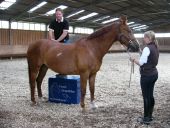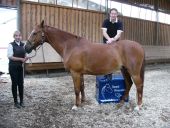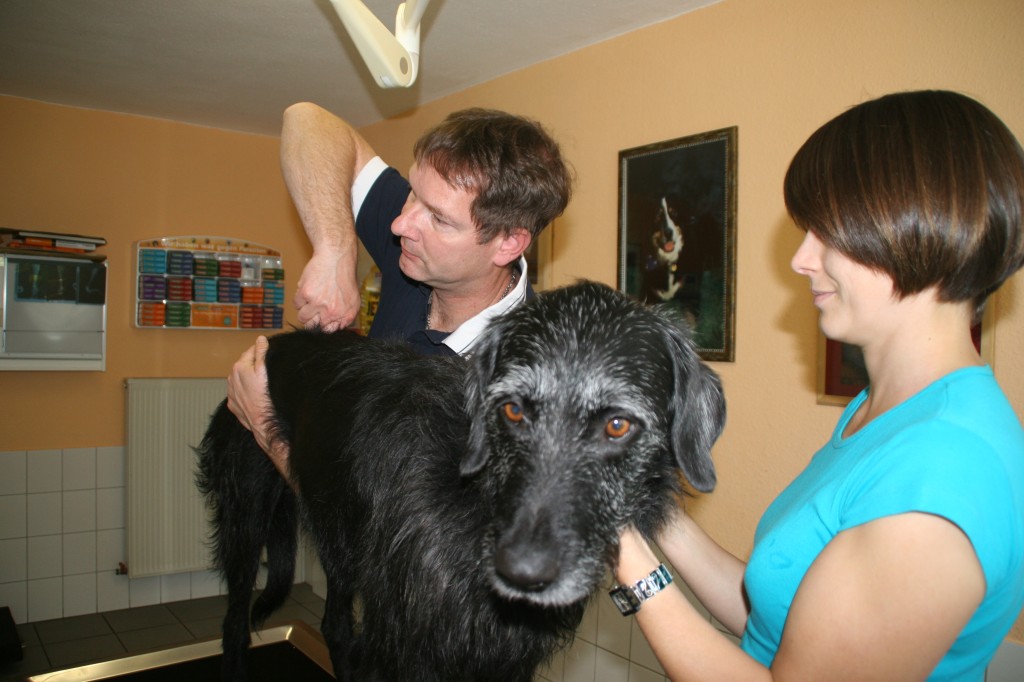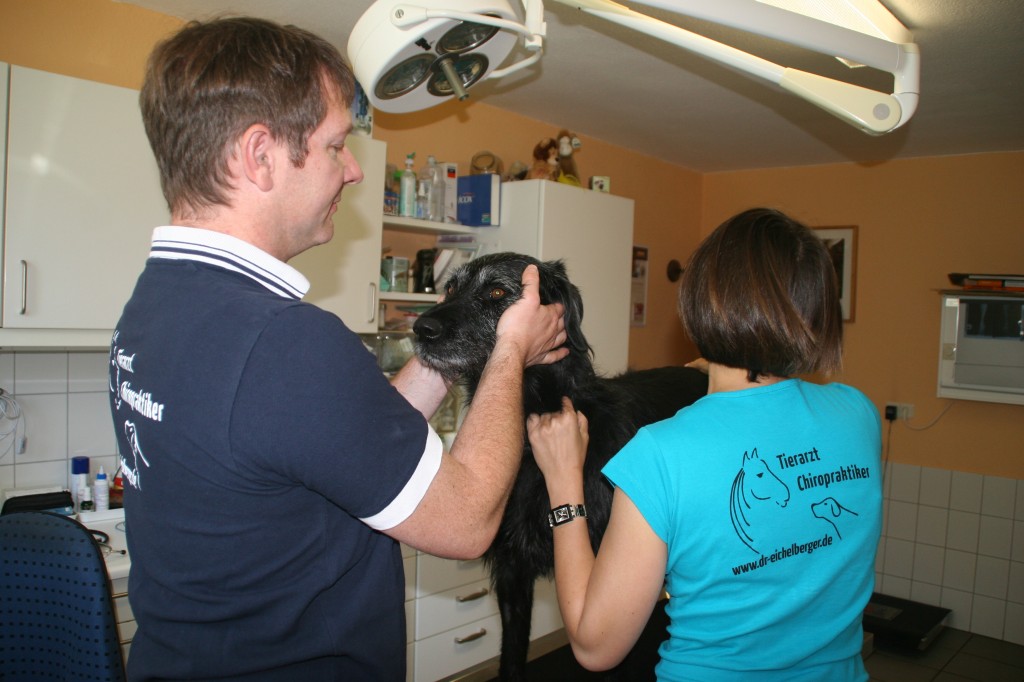What is chiropractic?
Chiropractic is a manual method of treatment caring about the spine and the associated soft tissues – in particular nerves. Of course, all other joints of the body are examined and treated as well.
The exertion of direct influence on the nervous system is what makes chiropractic unique. It is very interesting, as both muscle tension and the function of muscles is controlled by nerves and pain is caused and forwarded by nerves.
Finally, as also all inner organs are supplied by nerves running through the spine and emerging between two vertebras, you can understand why problems of the spine influence the function of or pain in inner organs. Chiropractic is no replacement of conventional medicine – which we are executing in our surgery by the current state of scientific knowledge -, but a reasonable supplement for problems that can only be symptomatically coped with by means of conventional medicine.
How will I know that my pet needs a chiropractical treatment?
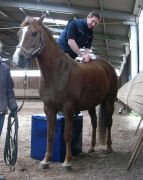
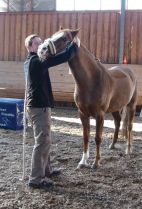
Chiropractic for horses:
The most common indication for a blockade in case of horses is pain. As an example, this might be expressed in posture, gait or only during work.
Equestrians often tell of
- reduced capacity
- insubordination under the equestrian
- putting on ears upon saddling
- yanking up the head or pushing away the back
- being restive upon jumping
- difficulties upon collection or in lateral movements
- anxious or painful countenance
- touch sensitivity
- clock errors
- stiffness of horse
- muscular dystrophia at certain body regions
- shortened steps with one or several legs
- nonspecific lamenesses
- horse leans against one rein
- equestrian is seated askew by the horse
- back does not swing
- many other symptoms are possible
—————————————————————————-
—————————————————————————–
Chiropractic for dogs:
The most common indication of a blockade in case of dogs is also pain.
Most often, those dogs are affected that have to fulfill certain tasks again and again, e.g. service dogs, sledge dogs, guard dogs and dogs in agility sports.
But also any family dog can suffer from blockades resulting from a clumsy movement, insufficient movement or unilateral training.
In case of dogs also inappropriate straining after surgeries and due to arthrosis like ED (elbow dysplasia) or HD (hip dysplasia) is very important.
Specifically mentioned are:
- traumata of spine
- spondyloses (ossifications at the spine)
- cauda equina syndrome
- cervical spine syndrome
- discopathies (e.g. dachshund paralysis)
- leak eczema
- HD
- arthroses
- sciatica neuralgia
- relapsing inflammation of anal glands
- incontinence
- hyperaesthesia and paraesthesia
- nonspecific lamenesses
- sport dogs for maximising capability
- geriatric (old) patients
Chiropractic for cats and other mammals:
Also cats and other mammals can suffer from blockades caused by wrong or too much and insufficient movement. Most often, traumata like tumbling or falling down from the hand or from other high objects are considered. But also these pets can get bad postures due to arthroses which cause further problems.
Often, a gait, unusual for these pets becomes obvious. Furthermore, the fact that certain berths or sleeping places are no longer used or that they eat in a different posture can indicate a chiropractic problem.
If you recognize behaviour or movement patterns you do not know from your pet, please contact us. We are happy to advise you.
What kind of education has a chiropractor?
Dr. Jochen Eichelberger studied veterinary medicine at the LMU Munich. Upon completion he carried out his dissertation in Munich in order to earn his doctorate. After having worked for several years as a veterinary in two veterinary practices and in one small-animal hospital, he took over a veterinary practice in Herrieden. By means of his education as well as the further education in the small-animal hospital, he is able to offer a wide range of veterinary services.
Due to the further education as a chiropractor, this scope is supplemented. The education was done at the School for Chiropractic in Sittensen. So far, there are only two schools for veterinary chiropractic in Germany as well as one in England and two in the US. Only veterinaries and human chiropractors are educated at these schools. Subsequently to the final examination at the school he also earned international accreditation through IVCA.
